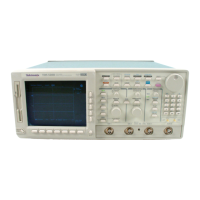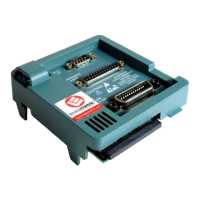Theory of Operation
TDS 340A, TDS 360 & TDS 380 Technical Reference
3–15
A26 Monitor Assembly
The A26 Monitor Assembly displays all information (waveforms, text, grati-
cules, and pictographs). It generates the high voltages necessary to drive the
display tube. It also contains the video amplifier, horizontal oscillator, and the
vertical and horizontal yoke driver circuitry.
The 640 by 480 pixel raster scan cathode-ray tube (CRT) display has 60 Hz
frame and 31.5 kHz line rates. This CRT display circuitry is similar to a
television monitor.
Inputs, Video, and Vertical Deflection. The +12 V regulator is a three-terminal
regulator (U130).
The Vertical Yoke Winding Driver provides the scan current (ramp) for the
vertical (field) deflection coil. A vertical sync signal, a negative pulse at the
deflection rate, causes the ramp to “retrace” to the top of the CRT screen.
A large pulse is generated during vertical retrace. A portion of this signal drives
the G1 grid 50 V more negative than normal during the retrace period. This
keeps retrace lines blanked even when the background is visible.
The Video Amplifier amplifies the input video signal, and drives the cathode of
the CRT.
Horizontal Deflection, CRT, and High Voltage. The Horizontal Oscillator Control
generates the “switch” controlling signal and synchronizes the scan to the
horizontal sync input signal. IC U370 includes a horizontal oscillator, a phase
detector, and an output shaper
The circuit is a phase-locked loop. The differentiated horizontal sync is the
reference signal, and the retrace or flyback pulse (U370 pin 4) is the feedback
signal to be locked to the horizontal sync (HORIZONTAL YOKE) signal.
Horiz Yoke Winding Driver transistor Q160, along with Q260 and T170,
provides the deflection coil currents.
Transformer T210 generates the CRT high voltage from the large voltage pulse
that occurs during horizontal retrace (flyback pulse). Other secondary voltages
are also derived from the flyback pulse.

